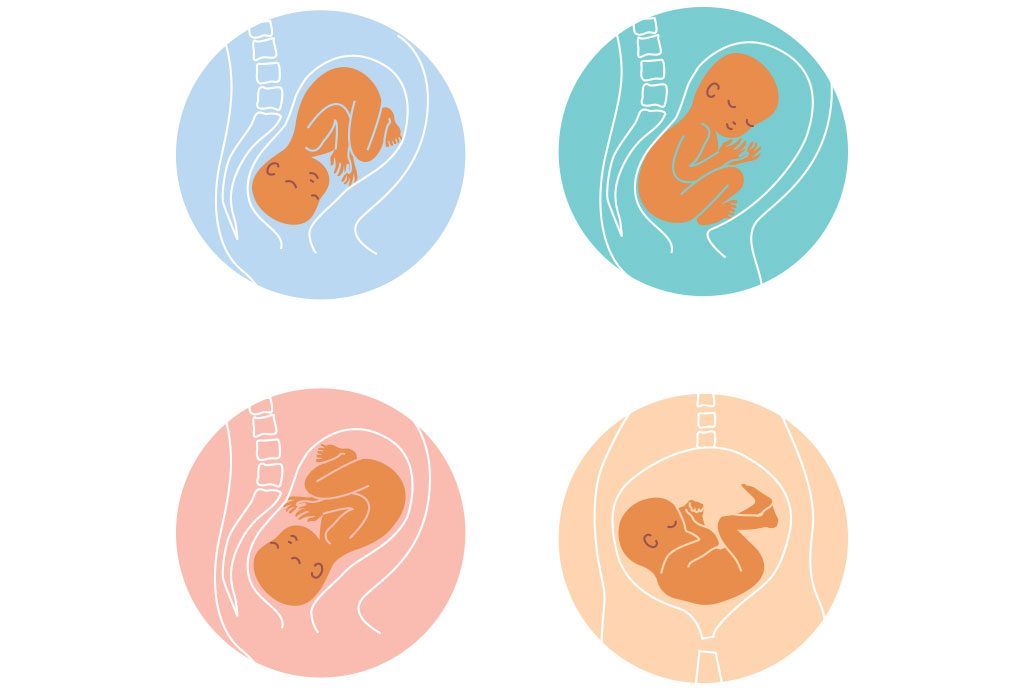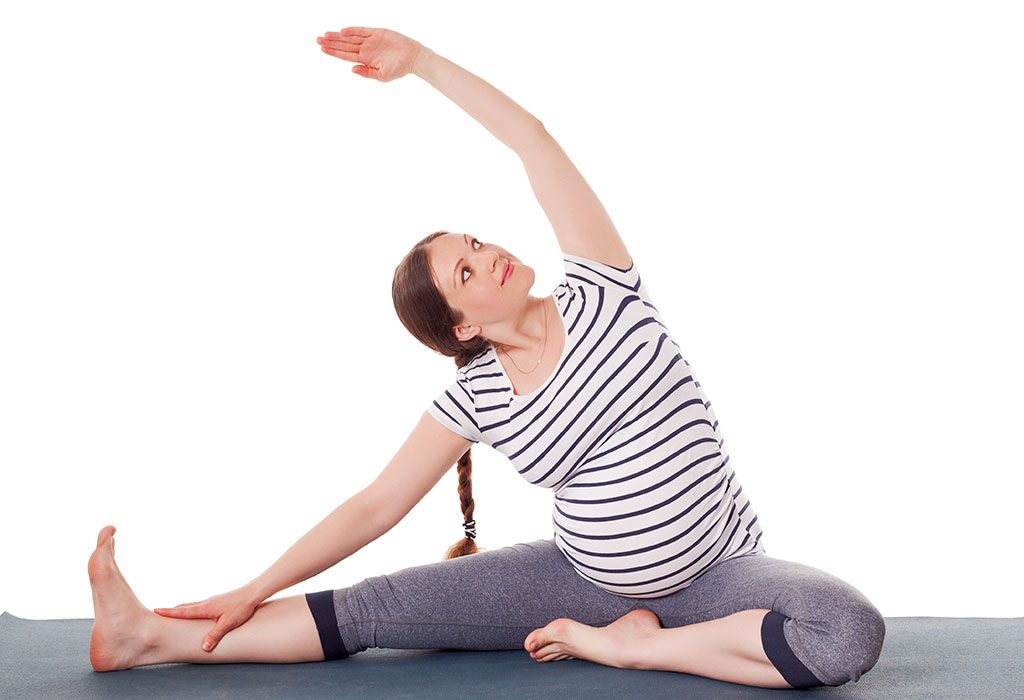In this Article
When you reach the eighth month of your pregnancy, you will finally feel that you are almost there. A couple of months more and you will soon have your baby. This is a crucial time of your pregnancy and your doctor will suggest an ultrasound to check whether your baby is in the right position or not. If you are eight months pregnant or soon will be, read on to know what should be the ideal position of the baby in the eighth month of pregnancy and the different positions a baby can get into.
What Should Be the Ideal Position of the Baby During the Eighth Month of Pregnancy?
After 32 weeks of pregnancy, a baby should generally be in the head-down position. This means that the baby’s head should face the birth canal and his legs should point toward the rib cage of his mother.
What Can Be the Different Positions of the Baby During the 8th Month of Pregnancy?
Here are the different positions your baby could get into during the eighth month of your pregnancy:
1. Breech Position
A baby is in the breech position when he is positioned ‘head-up’ in the woman’s uterus and his feet are pointed towards the birth canal. Around 4% of babies are in the breech position prior to childbirth. Due to such a position, the baby’s head is the last portion to come out which complicates its passage through the birth canal. This is not an ideal position for a baby to be in, the baby can develop hip problems later in life. If the baby is in the breech position and normal delivery is attempted, the baby might go into trauma in the process of childbirth. The baby may also get injured if delivered vaginally. When a baby is in the breech position, he should be delivered via C-section.
2. Transverse Lie Position
Only 0.05% of babies assume the transverse position before childbirth. In this position, the baby lies in a horizontal position instead of vertical. In this position, his head is pointed either towards the left or right side of the stomach. A baby may get into the transverse lie position because of some anomalies in the structural formation of the uterus itself.
3. Posterior Position
This position is a kind of a variant of the usual normal (or ideal) position for delivery. In this position, a baby’s head points down towards the birth canal and his feet are upwards. However, the baby faces the mother’s stomach from the inside, rather than facing the mother’s back ideally. This position could cause severe back pain to the mom-to-be and prolong the delivery process too. This position is called the occiput-posterior position.

How to Get a Baby Into the ‘Head-Down’ Position
For a successful and risk-free delivery, the baby should be in the ideal position during the eighth month of pregnancy. If your baby is not in the right position for delivery, it could lead to several complications. Certain procedures might be undertaken to get the baby into the right position.
Firstly, doctors will recommend an ultrasound scan to get a clearer picture of the baby’s position in the womb. In case a breech position is observed, most doctors attempt to reorient the baby using manual techniques. One of the techniques that doctors usually suggest is external cephalic technique. Techniques like these can prove to be beneficial if undertaken in the 36th week of the pregnancy, as during this time, the baby’s smaller size makes reorientation easier. It can still be done until 42nd week of the pregnancy, but chances of reorientation reduce accordingly.
In the initial attempt, tocolytic medication will be administered to the pregnant woman in order to relax the uterus. This will prevent any untoward contractions from taking place. Once the uterus relaxes, the doctor will hold the baby’s head with one hand, and his buttocks with another, and gradually reorient the baby to bring his head down. This is done very gently without causing harm to the baby, but it may cause slight pain to the pregnant woman if her uterus contracts.
Although vaginal delivery might be possible after this, most doctors don’t recommend it, especially for first-time mothers, since the pain can be tremendous. An emergency delivery might be suggested after this. Here, the pregnant woman will be administered epidural anaesthesia to mitigate the pain that might arise. This is conducted under strict medical supervision as there are chances of certain complications.
Things You Can Do to Get Your Baby in the Right Position
Here are some simple exercises you can try to get your baby into the right position.
1. Walk
Walking is one of the best exercises that you can try to get your baby in the right position. As you approach your delivery date, walk for at least half an hour twice a day; the rhythmic movement and the effect of gravity will cause the centre of the gravity inside your body to orient accordingly. Since the baby’s head is the heaviest part, it will tend to point in the direction of the earth.
2. Try Yoga
Yoga may prove beneficial too if done prior to the last trimester of your pregnancy. Do not attempt this when your delivery date is near, especially if you are trying yoga for the first time. Also, do not try complicated exercises – stick to simple exercises and try them under supervision.

3. Try Swimming
This works best since it doesn’t impact the baby much and is easier for the mother. By swimming in a breaststroke fashion, the buoyancy of water can help your baby turn its position easily and can also help your body undergo labour in a better way.
As your delivery date approaches, getting your baby in the right position will become all the more important. By going for regular checkups and taking necessary precautions, you can get your baby in the right position and have a risk-free delivery.









